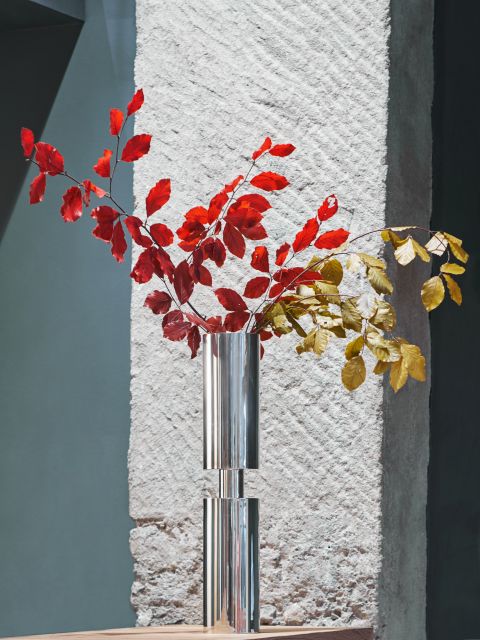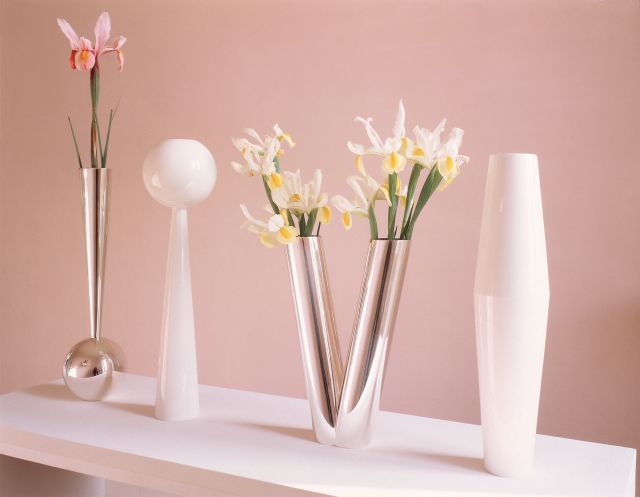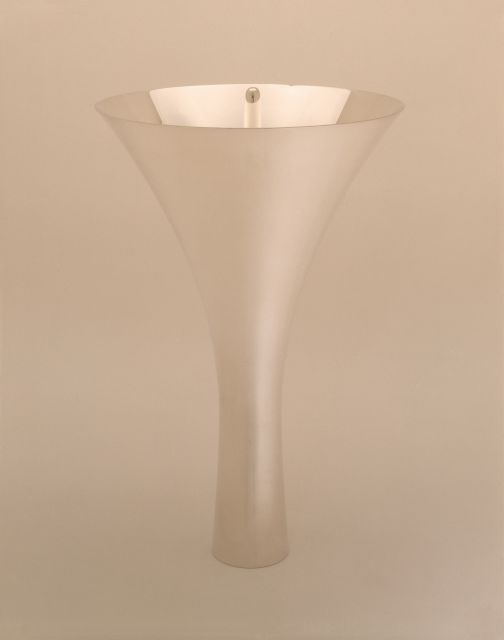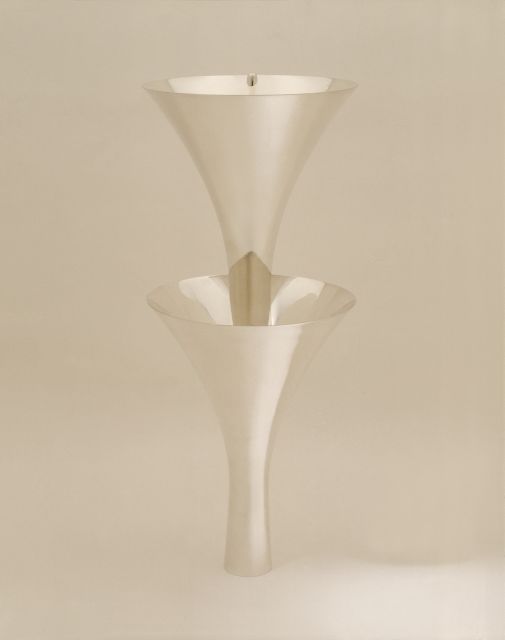A critical designer by Alessandro Mendini, 2003.
The most striking thing about Stefano’s objects for Gabi's Edition is not their physicality, but on the contrary, precisely their abstract and metaphysical essence. In a world that today generally produces objects without thought and reasoning, Stefano’s are on the other hand stated as thinking, positively thoughtful objects, with a rich story to tell. They are not explained by direct and real appearance, but through their indirect representation. They are the still life of themselves, just as the bottles painted by Morandi are not their corresponding real bottles. This mediated physicality, this purism transmitted by icons, expresses and describes many things. To be interpreted and seen, it needs to be appreciated and considered as well as looked at. Casciani’s objects come out of themselves and take us into the realms of history, of human nostalgia and memories of personal life, of theories, political and formal utopias, of homage to people admired; after which they are all put through a process of conceptual purification.
„Who is an artist? Someone who tells a lie to tell the truth. So I mix lies of industry and truth of people. But what is people? I don’t know.“
In this frozen but melancholy intellectualism lies the composed appeal of Casciani’s vases, of his spirals, furniture and photographic paintings. Cultivated and attentive, highbrow and not seductive, they look as if they were indifferent to the material they are made of (glass, ceramic, metal) and were instead all made of some indefinably classic and mellow material, like certain of the prototypes that Brancusi, the Bauhaus or Concrete Art were so fond of. In any case, all the metaphysics of the original avant-gardes, if it is to be interpreted and seen, must first be examined and pondered, and only afterwards looked at. This almost hidden collection of forms, as Pierre Restany suggests, is kept in a very private, secret garden, a puzzle of personal monuments and rigorous wonders joined by a thread of reserve, enigma, isolation and elegance.
Casciani’s position is elitist and radical, proposing and theorising solitude as a foundation for the morality of design. The creative designer by himself (that is to say without the indirect aid of industry) not only makes objects through which to directly transmit his own outlook, beyond the intermediaries, but actually with the ambition to alter their bearings:
„Industrialists come to me and ask me to tell people who they are. But they don’t know who they are. They want me to tell them who they are. But I don’t know who they are. So I ask them. But they don’t know it. So I invent.“
His dual background as a designer and critic has always induced Casciani to treat criticism as a ‚subspecies’ of design, just as design might be a ‚subspecies’ of literature. Social symbols and subtle controversy, declarations of method and coded messages written into his work, underlie the visible form of all his objects. In this way their appreciation is opened to the sculptural nature of things, to the pictorial character of colour, to the form of a spiral initiating knowledge, to the doubleness of geometric relations between cones, spheres and juxtaposed, permutated, superimposed and reversed; to a multiplication of the work, to production and craftsmanship: in other words to many of the themes central to the most important openings of design issues. The result defines a precise position: the ideation of objects that cannot be confined to design alone, but which are part of the aesthetic and anthropological categories of places for art, particularly sculpture. Casciani’s lean, modernist alphabet thus evolves to the strict pace of slow and empty spaces, where the aligned works are well detached from each other, in an ideal purist catalogue. His vocation for the systematic approach and for the study of the languages of the early twentieth century in Italy and in central Europe relate him, with his objects, to the expressiveness of constructivism, to Sironi’s chalky bas-reliefs, to Carrà’s or Braque’s silhouettes, as also to Piero Manzoni’s haunted whiteness. Casciani well-known as a professional journalist, critic and cultural coordinator; where as he himself has until now deliberately kept his work as a designer and architect quiet, aloof, introverted and almost disenchanted, detached from the violence of reality and confined to the sphere of private events:
„I am a designer. I am an artist. I am a writer and a copy-writer.“
This slightly snobbish intellectual, with his faintly Gramscian look and attitude, has for years developed an orderly network of interconnections, where even flower vases can be translated into exemplary statements, souvenirs of the complexities of contemporary design. And always against the tragic, self-ironic background of his harsh nursery rhymes, carefully protected by him from the selfsame media flows in which he shares:
„I suppose people love life, but it is not true. People love money, sex, bodies and cars to kill or to kill themselves. Sometimes people love flowers. So I design flower vases. I design them carefully, I want them to be beautiful. But I am not a craftsman. I am an artist and a designer. So I go to a good craftsman. The craftsman is very clever. He makes my designs very well. So I am happy. This is the truth. Thanks to Gabi. Thanks to the people who love me.“







